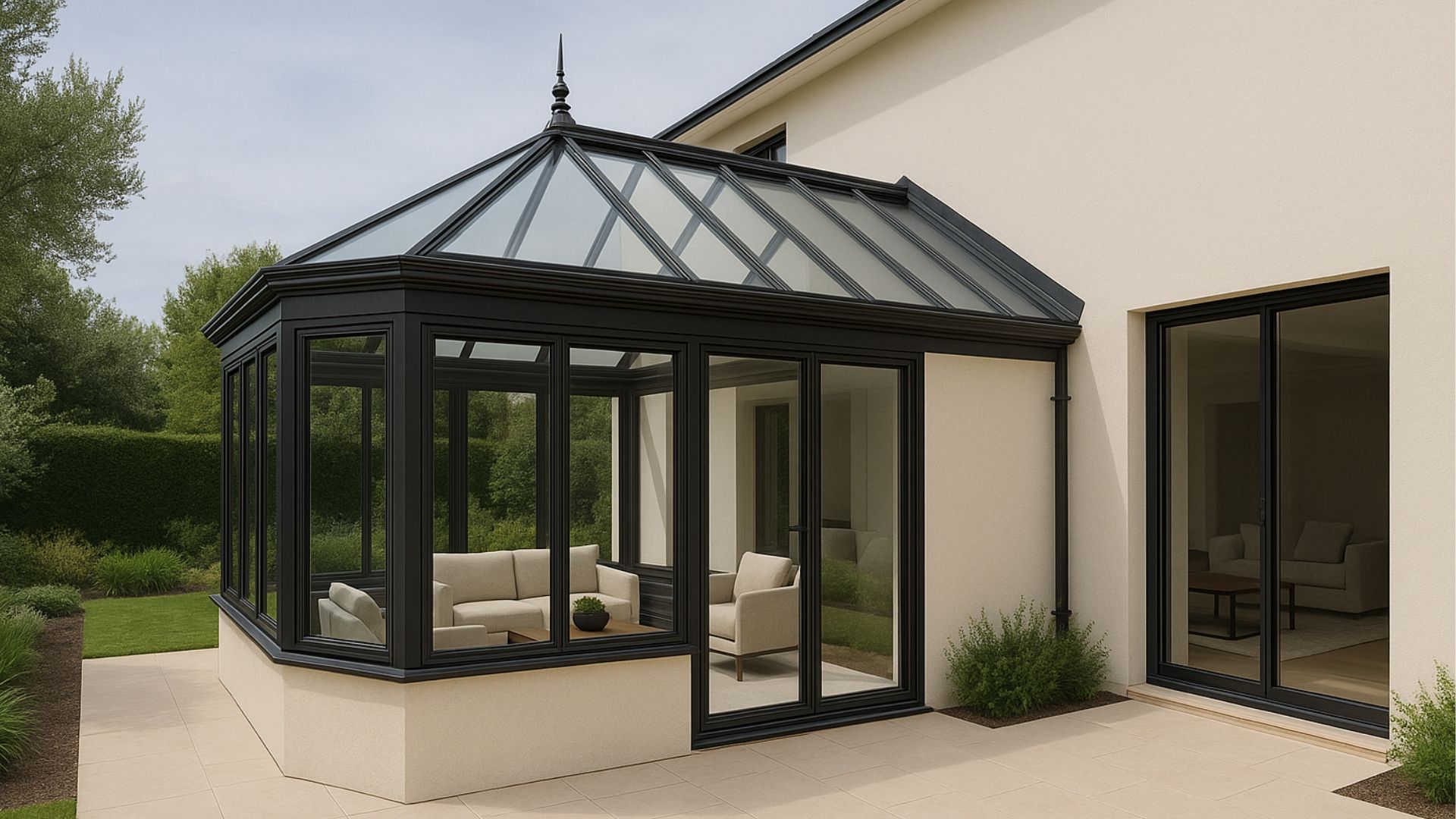Non-typical uses for acoustic glass: from libraries to animal shelters
Share this blog:
Acoustic glass is often used for windows. But what are some less typical applications? Explore 5 examples.

Wie sich die Zeiten doch geändert haben. Jahrhundertelang, ja sogar Jahrtausende lang, waren Gebäude von Natur aus laut.
Ein Fenster war eine einzelne Glasscheibe – gut gegen Regen, weniger gut gegen Lärm. Wer sein Zuhause schalldämmen wollte, musste mit Teppichen, Teppichböden und Wandpaneelen kreativ werden.
Fast forward to the 21st century and we're spoiled for choice. Buildings of all shapes and sizes can be soundproofed with acoustic foam, glass wool, polyethylene terephthalate (PET), suspended baffles and high-quality
acoustic glass.
Schalldämmung sorgt für bessere Gebäude. Die Möglichkeit, die Schallmenge zu kontrollieren, die in ein Gebäude eindringt (und aus ihm heraus), kann den Aufenthalt dort angenehmer machen. Das gilt sowohl für Gebäude mit hohem Fußgängeraufkommen als auch für Gebäude, in denen Konzentration und Ruhe an der Tagesordnung sind.
Wenn Sie jemanden fragen, wofür Akustikglas verwendet wird, wird er wahrscheinlich „Fenster“ nennen. Aber wussten Sie, dass es auch für viele andere Anwendungen eingesetzt werden kann?
In diesem Artikel stellen wir fünf kreative und ungewöhnliche Einsatzmöglichkeiten von Akustikglas vor. Doch zunächst: Was ist Akustikglas eigentlich?
Was ist Akustikglas?
Akustikglas – manchmal auch als Schallschutzglas oder Lärmschutzglas vermarktet – ist eine Glasart, die Geräusche absorbieren und ein Gebäude leiser machen soll.
Es handelt sich um eine Art Verbundglas, das aus zwei Glasscheiben mit einer Kunststoffzwischenschicht besteht. Diese Zwischenschicht dient gleichzeitig der Schallabsorption und verleiht der Glaseinheit zusätzliche Stabilität.
Dies geschieht ohne erkennbare Veränderung der Optik des Glases. Das bedeutet, dass Sie für eine optimale Lärmreduzierung keine Abstriche bei der Ästhetik machen müssen.
Wenn Sie in Akustikglas investieren, beachten Sie, dass Sie Ihre Verglasung mit einem entsprechenden Rahmensystem kombinieren müssen.
1. Bibliotheken
Man könnte meinen, Akustikglas sei nur an lauten Orten wie Bahnhöfen und Schulen erforderlich. Doch auch in ruhigen Umgebungen wie Bibliotheken muss der Schall kontrolliert werden.

Schließlich stören Schritte oder Gespräche beim Lernen mehr als beim Warten auf den Zug. In belebten Gegenden haben viele Menschen gelernt, den Lärm auszublenden.
In Bibliotheken ist Konzentration das A und O. Und selbst in diesen Horten der Ruhe ist Stille nicht garantiert. Mitarbeiter und Nutzer interagieren. Menschen kommen und gehen. Akustikglas hilft, dies für Bibliotheksnutzer zu verhindern.
Bibliotheken sind ein interessantes Beispiel dafür, wie unterschiedliche akustische Herausforderungen alte und neue Gebäude mit sich bringen. Alte Bibliotheken sind oft hallig, mit hohen Decken, harten Böden und hochgewölbten Glasfenstern. Neue Bibliotheken hingegen sind deutlich gedämpfter, da Teppiche und Vorhänge den Schall absorbieren.
Beide können von Akustikglas profitieren, die genaue Anwendung variiert jedoch. Dasselbe gilt für Museen, Labore und andere Studienorte.
2. Glasböden
Walk-on glass is a modern miracle. Whether you're on a glass-floored balcony, a glass-bottomed boat or
crossing the 632-metre-long glass bridge in Moc Chau, Vietnam, walkable glass technology gives you an experience you won't forget in a hurry.
Dies ist nur durch Verbundglas möglich. Alles andere gefährdet die Sicherheit der Menschen. Bei all diesen Anwendungen spielt jedoch auch Lärm eine Rolle.
Schritte können in jeder Umgebung störend sein – in einer luxuriösen Umgebung mit begehbarem Glas sind laute, klappernde Schritte jedoch tabu.
Auch in diesem Zusammenhang kommt Akustikglas voll zur Geltung, denn es dämpft unerwünschten Lärm, ohne dass dabei Sicherheit oder Klarheit verloren gehen.
3. Tierheime
Tierheime sind Zufluchtsorte. Doch oft herrscht dort Chaos und Lärm, und die Geräusche der Tiere werden von Betonböden und Metalldächern widergespiegelt. Der dadurch entstehende Stress kann Tiere krank machen oder bestehende Krankheiten verschlimmern.
Das muss nicht sein. Akustikglas kann Tierheime für Tier und Mensch deutlich einladender und angenehmer machen. Gleichzeitig ermöglichen Akustikglastrennwände ein Zusammenleben von Katzen und Hunden, ohne sich gegenseitig zu stören.

Wie jedes Gebäude können auch Tierheime auf verschiedene Weise schallgedämmt werden. Manche Einrichtungen verwenden akustische Wandpaneele und Schaumstoffisolierung. Akustikglas hat jedoch einen entscheidenden Vorteil: Es ist leicht zu reinigen, insbesondere im Vergleich zu Wandpaneelen.
Akustikglas lässt sich problemlos absprühen und abwischen und ist daher ideal für alle Arten von Räumen, die für Tiere konzipiert sind.
4 Intelligentes Glas
Smart glass is a remarkable innovation. At the touch of a button on a smart home system, it can change from transparent to opaque. Many varieties can also be dimmed, giving you full control over the amount of light coming through the glass.
Seine Hauptfunktion besteht darin, Ihnen auf Wunsch Privatsphäre zu bieten, sei es in einem Luxusjet, auf einem Autoschiebedach, als Sichtschutz in einem Krankenhaus oder als verdunkelbare Trennwand in einem Büro.
Darüber hinaus haben Sie damit auch mehr Kontrolle über die Akustik. Egal, ob im privaten oder gewerblichen Bereich installiert, die laminierte Konstruktion sorgt für ein gewisses Maß an Schalldämmung und ermöglicht gleichzeitig eine bessere Sicht.
5. Aquarien
Aquarien sind sorgfältig konstruierte Geräte. Und das aus gutem Grund: Sie müssen den Fischen einen sicheren Lebensraum bieten und gleichzeitig attraktiv, robust und pflegeleicht sein.
Ein Aquarium ist nicht nur Dekoration. Es ist ein Zuhause. Und wie in jedem Zuhause möchten viele Aquarienbesitzer die Geräusche kontrollieren, die in das Becken hinein- und aus ihm herausströmen.
Akustikglas kann Fischen ein ruhiges Leben ermöglichen, indem es die durch das Glas übertragenen Geräusche reduziert. Auch die Besitzer profitieren von der Ruhe, da das Glas den Lärm der Luftpumpe dämpft.
Die TG AG stellt sich vor
At ToughGlaze, we have our own state-of-the-art acoustic glass product. TG AG is a type of laminated glass that can be used for traditional
acoustic glazing and more unusual use cases.
It's robust, endlessly customisable, Kitemark-certified, made-to-measure and compliant with all relevant British standards. Interested? Then
get in touch today for a quick, competitive quote.









